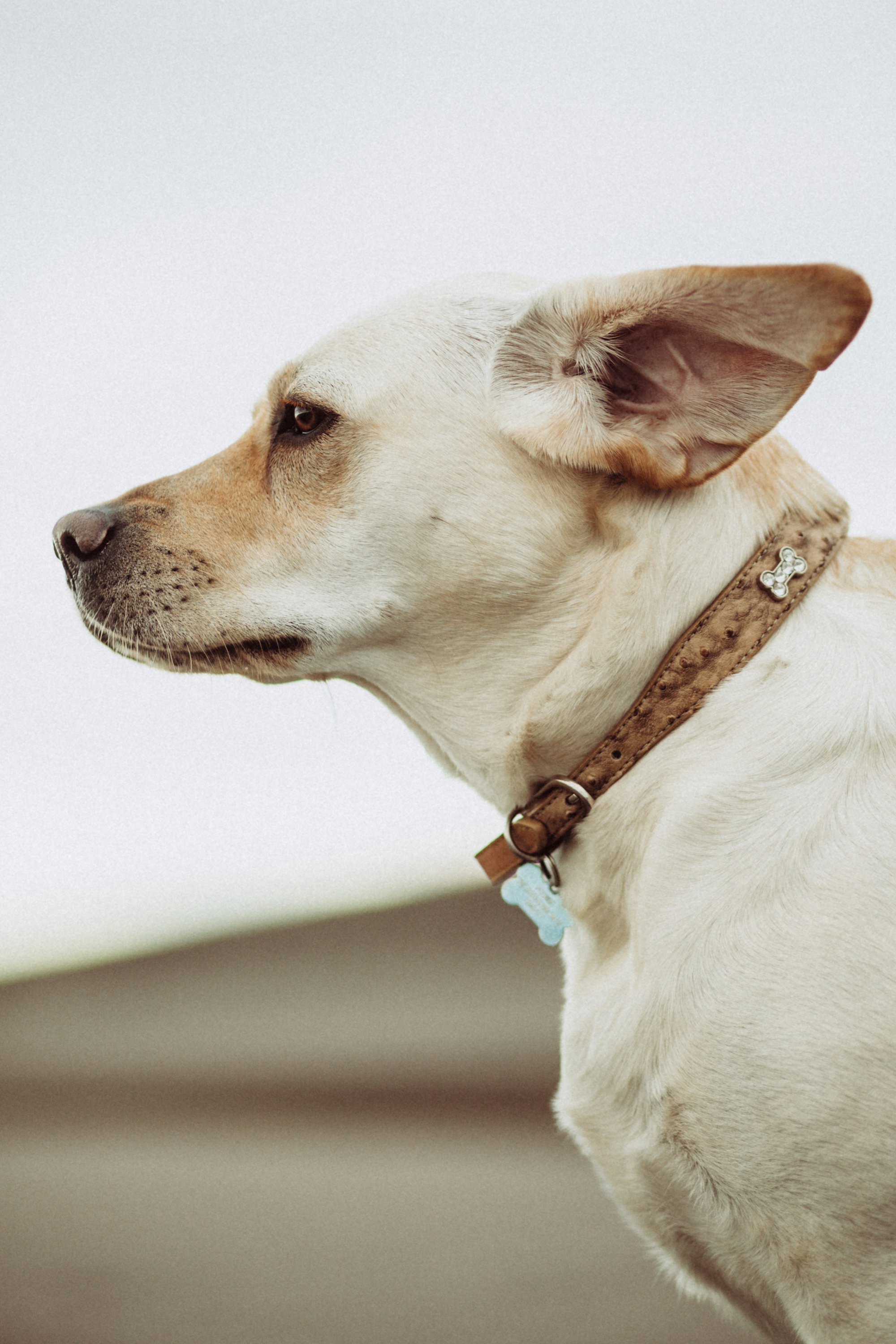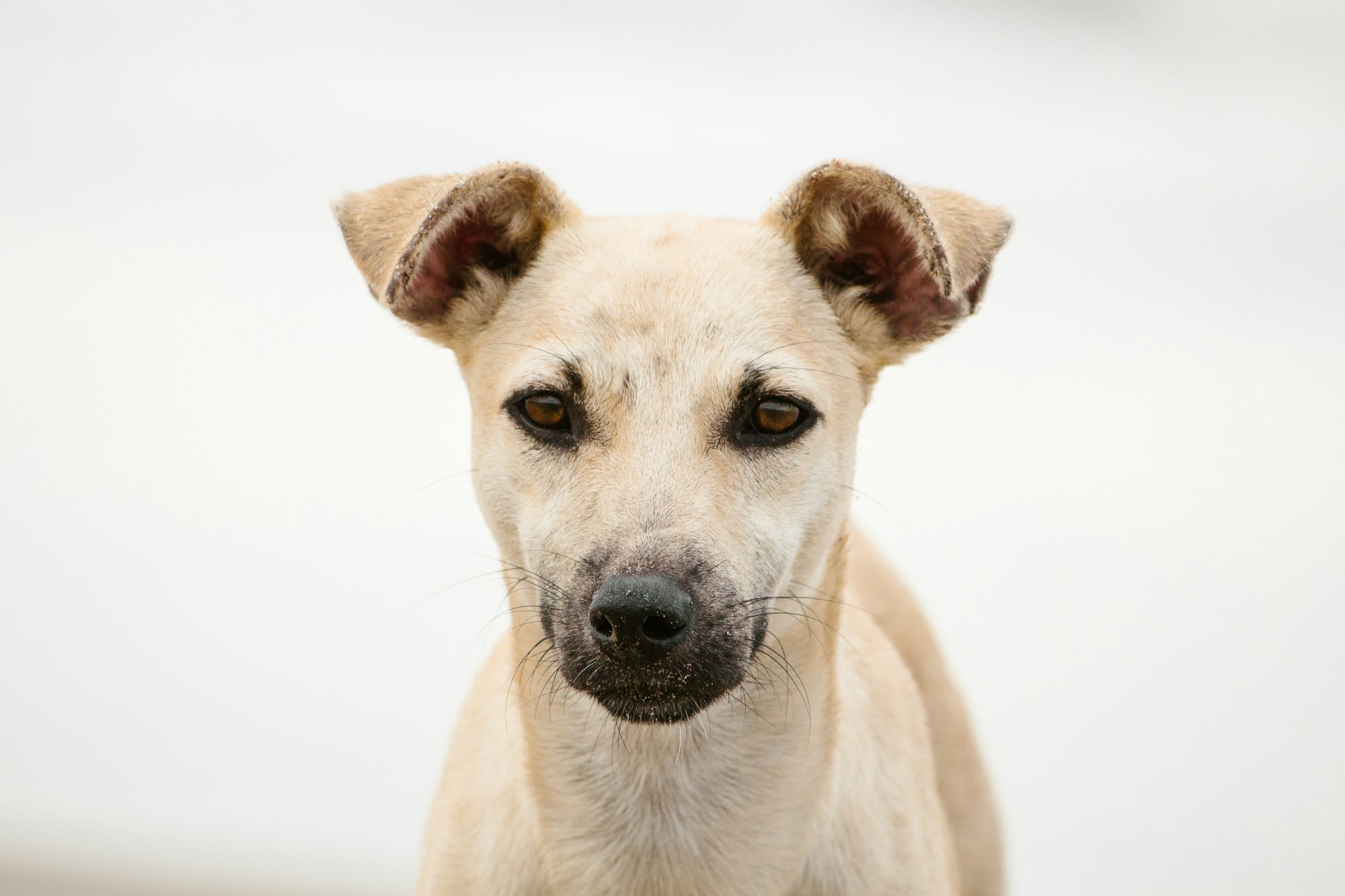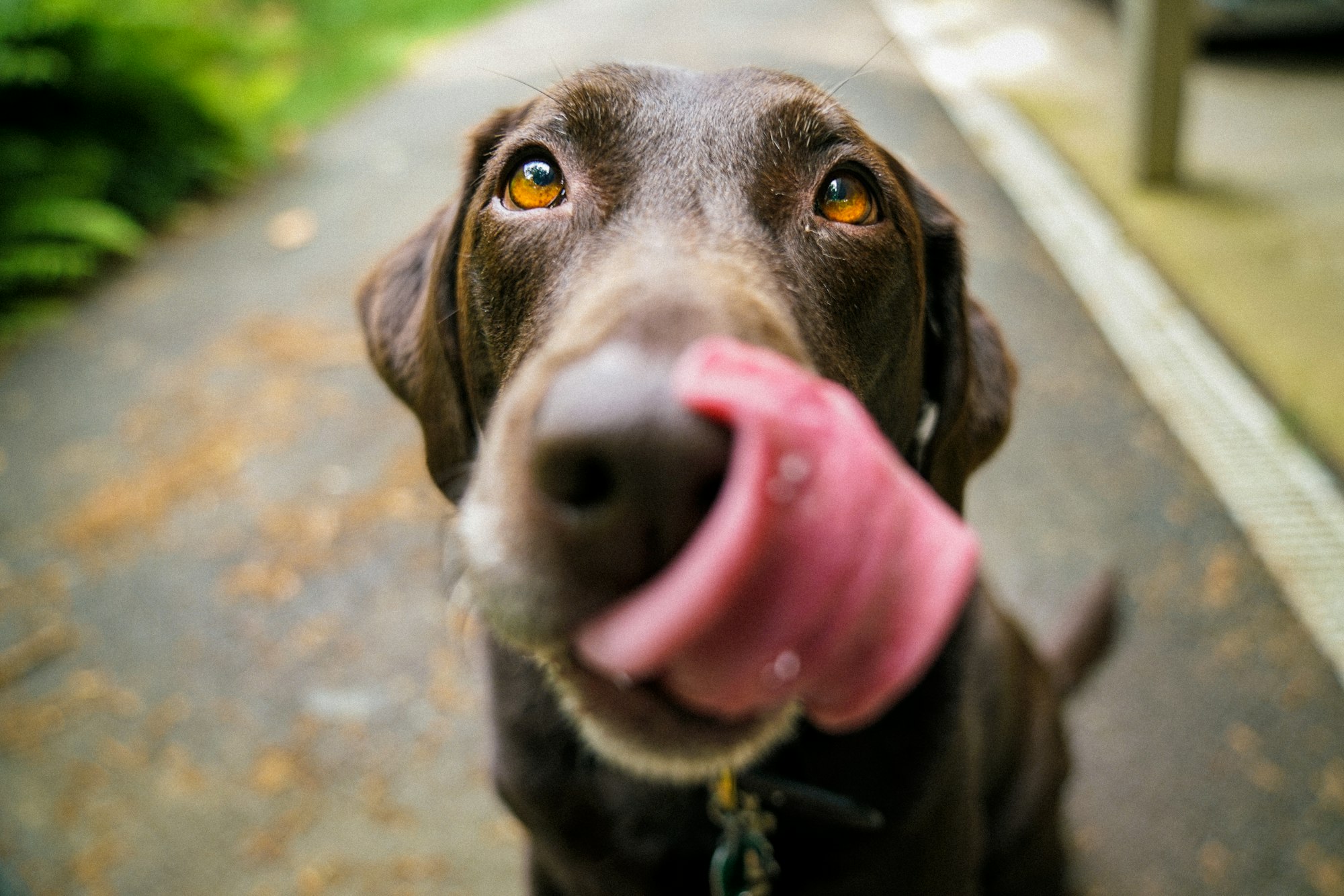Why Are My Dog's Ears Cold? It's a common concern for pet owners to notice that their dog's ears feel cold. Understanding normal body temperature in dogs can provide insight into why their ears might be cold.
The normal body temperature for dogs is slightly higher than humans, ranging from 99.5°F to 102.5°F (37.5°C to 39.2°C). However, cold ears in dogs can have various possible reasons. Weather conditions, such as cold temperatures or being outside in chilly winds, can cause a dog's ears to feel cold. In some cases, decreased blood circulation to the ears due to health issues or anxiety and stress can contribute to cold ears. infection or inflammation in the ears can also lead to a change in temperature.
While cold ears alone don't always indicate a problem, there are scenarios where you should be concerned. Monitoring your dog for other symptoms like lethargy, loss of appetite, or signs of pain is crucial. If you suspect an underlying health issue or if there are persistent concerns, it is best to consult a veterinarian. In the meantime, you can help warm up your dog's ears by providing a warm and comfortable environment, dressing them appropriately for the weather, and encouraging regular exercise to improve blood flow.
Key takeaway:
- Understanding normal body temperature in dogs: Dogs have a higher body temperature than humans, and their ears may feel colder to the touch. It is important to know the average body temperature for dogs to determine if their ears being cold is normal or a cause for concern.
- Possible reasons for cold ears in dogs: Cold ears in dogs can be caused by various factors such as weather conditions, blood circulation, anxiety or stress, or even infection or inflammation. It is important to consider these factors when assessing the reason for your dog's cold ears.
- How to help warm up your dog's ears: If you notice your dog's ears are consistently cold and it is causing concern, there are several steps you can take. Providing a warm and comfortable environment, dressing your dog appropriately for the weather, and ensuring regular exercise and increased activity can help warm up your dog's ears.

Why Are My Dog's Ears Cold?
Are you wondering why your dog's ears are cold? The temperature of a dog's ears can vary for several reasons. One possible explanation is that your dog is feeling cold. Dogs regulate their body temperature through their ears, so if they are in a chilly environment, their ears may feel cold to the touch. Another reason for cold ears could be poor circulation, which can make them feel cool. It's essential to note that if your dog's ears are consistently cold, it might indicate an underlying health issue like hypothyroidism or circulatory problems.
Possible Reasons for Cold Ears in Dogs
When it comes to our furry friends, it's hard not to notice every little change in their behavior or physical appearance. One noticeable, yet intriguing issue that dog owners often encounter is cold ears in their canine companions. In this section, we'll dive into the possible reasons behind this peculiarity. From weather conditions to blood circulation, anxiety or stress, and even infection or inflammation, we'll unveil the factors that may be behind your dog's chilly ears. So, let's unravel the mysteries and find out what might be causing those cold ears in our beloved pets.
Weather Conditions
Weather conditions are a crucial factor in determining the temperature of a dog's ears. Here are some aspects to consider:
- Temperature: Dogs' ears can become cold when exposed to colder weather conditions, such as during winter months or in chilly environments.
- Wind: Windy weather can cause a dog's ears to feel colder, as the wind can remove heat from the ears at a faster rate.
- Moisture: If it is raining or snowing, the ears can become wet, which can further contribute to their coldness.
- Humidity: High levels of humidity can make a dog's ears feel clammy and colder.
To help keep your dog's ears warm and comfortable in different weather conditions, consider the following tips:
- Provide appropriate protection: In cold weather, consider using a doggie hat or earmuffs specifically designed to keep their ears warm.
- Limit exposure: When the weather is cold or inclement, limit your dog's time outdoors to prevent them from being exposed to harsh conditions.
- Dry their ears: After your dog has been outside in wet weather, make sure to dry their ears thoroughly to prevent moisture from contributing to coldness.
- Monitor your dog: Keep an eye on your dog's behavior and body language to ensure they are comfortable and not showing any signs of discomfort or distress.
Blood Circulation
Blood circulation in dogs plays a vital role in regulating the temperature of their ears. Adequate blood flow ensures that the ears receive a sufficient supply of warm blood, which helps maintain their temperature. If there is a compromise in blood circulation, the ears can feel cold to the touch.
Various factors can affect a dog's blood circulation. One common cause is poor overall circulation, which may be a result of certain health conditions or diseases. External factors, such as cold weather or exposure to drafts, can also constrict the blood vessels and decrease blood flow to the ears.
To enhance blood circulation and warm up a dog's ears, it is important to provide them with a warm and comfortable environment. Make sure your dog has a cozy bed or blanket to curl up on and avoid exposing them to cold temperatures. Regular exercise and increased activity can further promote better blood circulation throughout their body.
Monitoring your dog for any additional symptoms that may indicate underlying health issues is crucial. If you notice persistent cold ears, along with other concerning signs like lethargy or abnormal behavior, it is recommended to consult a veterinarian. They can examine your dog and provide appropriate guidance or treatment to address any underlying causes affecting their blood circulation.
Pro-tip: Regular exercise and a warm and cozy environment can help boost blood circulation, keeping your dog's ears comfortably warm.
Anxiety or Stress
- Dogs may experience a decrease in blood flow to their ears due to anxiety or stress.
- Dogs experiencing anxiety or stress may display various behavioral changes such as trembling, panting, pacing, or hiding10.
- Environmental factors such as loud noises, unfamiliar surroundings, or changes in routine can contribute to anxiety or stress levels in dogs11.
Interestingly, anxiety and stress in dogs can not only affect the temperature of their ears but also impact their overall well-being.
Infection or Inflammation
Infection or inflammation can be possible reasons for cold ears in dogs. Infections can occur due to the presence of bacteria, fungi, or parasites in the ears.
Ear infections are common in dogs, especially those with floppy ears or excessive hair in the ear canal. Inflammation can occur as a response to an irritant or allergen, causing redness, swelling, and discomfort in the ears.
Identifying infection or inflammation in your dog's ears is important as they can be uncomfortable and may require treatment. Signs of infection or inflammation may include a foul odor, discharge from the ears, redness or swelling, frequent scratching or shaking of the head, and sensitivity to touch.
If you suspect that your dog has an ear infection or inflammation, it is recommended to consult a veterinarian. A veterinarian can examine the ears, perform tests if needed, and prescribe appropriate medication to treat the infection or inflammation. It is important to follow the veterinarian's instructions for cleaning the ears and administering medication to ensure proper healing.
Preventing ear infections and inflammation in dogs can be done by regularly cleaning the ears, especially for dogs with floppy ears or excessive hair. It is also important to keep your dog's ears dry, as moisture can contribute to the growth of bacteria and fungi. Regular grooming and maintaining a healthy diet can also help support your dog's overall ear health.

How Can I Help Warm Up My Dog's Ears?
Looking to warm up your dog's ears? We've got you covered! In this section, we'll explore some fantastic ways to help your furry friend feel cozy. From creating a warm and comfortable space for them to providing suitable attire for the chilly days, we'll delve into various strategies. We'll discuss the importance of regular exercise and increased activity in keeping those ears toasty. So, let's get started and give your pup the warmth they deserve!
Provide a Warm and Comfortable Environment
It is crucial to provide a warm and comfortable environment for your dog to help warm up their cold ears. There are several ways in which you can achieve this:
- Ensure that your dog's sleeping area is warm and cozy. Provide a soft and comfortable bed with blankets or a heated pad to keep them warm.
- Keep your home at a comfortable temperature. Make sure the temperature inside is suitable for your dog, especially during colder seasons.
- Avoid exposing your dog to drafts or cold air. Keep windows and doors closed, and provide them with a warm and sheltered area when they are outside.
- Use heating aids if necessary. If your dog is feeling particularly cold, you can utilize a dog sweater or jacket to provide extra warmth. Consider using a dog-safe heating pad or blanket for added comfort.
- Provide warm and cuddly bedding. Adding extra blankets or bedding to your dog's favorite spot can help them feel cozy and warm.
Remember to observe your dog's behavior and adjust their environment accordingly. If you notice persistent cold ears or other concerning symptoms, it is always best to consult a veterinarian for further guidance. By ensuring a warm and comfortable environment, you can help promote your dog's well-being and overall comfort.
Dress Your Dog Appropriately
To dress your dog appropriately and keep their ears warm in cold weather, follow these steps:
- Choose the right clothing: Look for dog sweaters or jackets that cover their ears. These should be made of warm and insulating materials like fleece or wool.
- Measure your dog: Ensure you have the correct size by measuring your dog's neck, chest, and length. This will help you find clothing that fits them properly and covers their ears.
- Check for ear holes: Some dog clothing may have specially designed openings or ear holes that allow your dog's ears to remain uncovered. This can be beneficial for dogs who are uncomfortable with having their ears covered.
- Consider a hat or hood: In addition to a sweater or jacket, you can also find accessories like hats or hoods that cover your dog's ears. Ensure that these are comfortable for your dog and don't obstruct their vision or hearing.
- Keep it snug but not too tight: When dressing your dog, make sure the clothing is snug enough to keep them warm but not too tight that it restricts their movement or puts pressure on their ears.
- Monitor your dog's comfort: Observe your dog while they are wearing the clothing to ensure they are comfortable. Watch for any signs of distress or discomfort.
- Remove clothing when necessary: If your dog starts to overheat or shows signs of discomfort, remove their clothing to prevent any potential issues.
Dressing your dog appropriately can help dress your dog appropriately for cold ears and protect them from the cold. It is essential to choose clothing that fits properly and is comfortable for your dog. Monitor their comfort level and make adjustments as needed.
Regular Exercise and Increased Activity
Regular exercise and increased activity are essential for maintaining the overall health and well-being of your dog.
- Regular physical activity, such as Regular Exercise and Increased Activity, can help prevent obesity in dogs, a common health issue that can lead to various other complications.
- Regular Exercise and Increased Activity also stimulate blood circulation in your dog's body, ensuring efficient delivery of oxygen and nutrients to all organs and tissues.
- Engaging in Regular Exercise and Increased Activity can help alleviate stress and anxiety in dogs. It provides an outlet for excess energy, reducing behavioral issues that may arise from pent-up energy.
- Regular Exercise and Increased Activity also promote mental stimulation for your dog, keeping their brain active and engaged, which contributes to their overall well-being.
It is important to note that the amount and intensity of exercise should be tailored to your dog's age, breed, and overall health. It is best to consult with your veterinarian to determine the appropriate exercise regimen for your furry friend. Regular Exercise and Increased Activity should be a consistent part of your dog's routine to ensure their optimal health and happiness.

When Should I Consult a Veterinarian?
- If your pet is experiencing persistent vomiting or diarrhea, it is important to consult a veterinarian. These symptoms could indicate an underlying digestive issue or gastrointestinal infection.
- Any signs of difficulty breathing should prompt an immediate visit to the veterinarian. This could be a sign of a respiratory infection or a more serious condition.
- Unexplained lethargy or weakness in your pet should not be ignored. If your normally energetic pet is suddenly uninterested in activities or seems unusually tired, it is best to consult a veterinarian.
- If your pet has a sudden loss of appetite or refuses to eat for an extended period of time, it is important to seek veterinary attention. This could be a sign of an underlying health issue.
- If your pet displays signs of pain or discomfort, such as limping, whining, or reluctance to touch certain areas, it is essential to consult a veterinarian. They can help identify the cause of the pain and provide appropriate treatment.
- Changes in urination or defecation habits should be taken seriously. If your pet is having accidents indoors, straining to urinate, or has blood in their urine or stool, it is important to consult a veterinarian.
- Unexplained weight loss or gain should be addressed by a veterinarian. These changes in body weight could be a symptom of an underlying health condition.
- If your pet is experiencing seizures or other abnormal neurological symptoms, it is crucial to seek veterinary care immediately. These symptoms could indicate a serious neurological disorder.
Some Facts About Why Are My Dog's Ears Cold:
✅ Dogs' ears can become cold due to various reasons, and it's important to understand the underlying cause.
✅ One common reason for cold ears in dogs is exposure to cold weather, especially for small dogs, short-haired dogs, and older dogs.
✅ To prevent cold ears in dogs during cold weather, it is advised to limit their time outside and consider getting them an insulating coat or sweater.
✅ Frostbite can cause cold ears in dogs, and if a dog's ears develop a bright pink color, they should be brought indoors and warm compresses should be applied.
✅ Circulatory function can also be a cause of cold ears in dogs, although it is rare. Heart problems, anemia, and internal bleeding can affect circulation.
Conclusion:
In conclusion, cold ears in dogs can be attributed to a variety of factors, including exposure to cold weather, poor circulation, anxiety or stress, and even underlying health conditions such as infections or inflammation. It's crucial for pet owners to understand that while cold ears may not always signify a serious problem, they should be vigilant and observe their dogs for any accompanying symptoms that could indicate a deeper issue.
Providing a warm and comfortable environment, dressing your dog appropriately for cold weather, and ensuring regular exercise can help prevent and manage cold ears. However, if cold ears persist or are accompanied by other concerning signs, it is essential to consult a veterinarian for a thorough examination and appropriate treatment. By staying attentive to your dog's health and comfort, you can ensure they remain happy, active, and well-cared for in all conditions.






